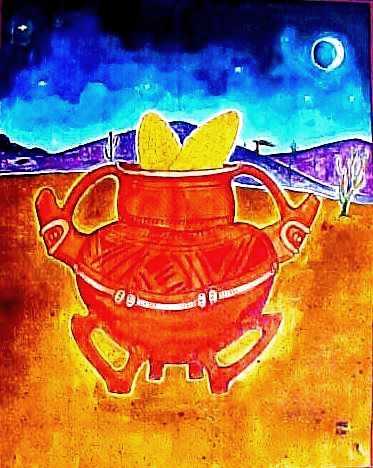Article by Etnia Nativa call us 592 2702 and book your experience!
By including essential elements of our native culture in art without intending it, we arrive at an art contrary to figurative (that is, the representation of identifiable objects through recognizable images) to abstract art, we see how abstraction proposes a new reality by not representing concrete things, but proposing a “pure art” that we can certainly enjoy beyond our reality.
Starting from this concept and using “corn” as a vital element of the work, the ideas and concepts prevail in the works presented while the visible reality becomes figurative.
Using “Maish”- Papiamento language for corn – in abstract art the results are as surprising as the importance of corn in Native American culture. For from Mexico, corn spread north and south.
When Europeans like Columbus came into contact with people who lived in the Caribbean, North and South America, corn was an important part of the diet of most natives while until that time, Europeans were unaware of its existence.
If we think that the first Thanksgiving was celebrated in 1621. While sweet potatoes, cranberry sauce, and pumpkin pie were not on the menu, Indian corn certainly would have been one a plate.
For Aruba, corn was of vital importance and the most important crop followed by cassava, beans, squashes and peanuts to mention a few. Corn was sacred to the Caquetio and he respected the whole plant as its creator as mother food and revered with the greatest respect. Along with pollen and ceramic buren, ancient Aruba agro-ceramic cultures had left their native mills or Metate’s known as “cudie”, testimony to the presence of corn. This abundance of food gave time to master many expressions of the art of ceramics and a huge variety of crafts and techniques.
The cultivation of corn brought an entirely new era and progress to Amerindian societies across the continent. Yes, for those who successfully grew corn, including those found on islands and mountains. All of these Amerindian groups claim that their meat and bones are made from corn, Maish, or Zea mays, the anthology of GMO`s. This is how important this wonderful plant is to many native American cultures.
To get to know more over Aruba’s and its origins, its animals and culture, we highly recommend you to book your visit for our renowned cultural encounter session has been entertaining curious participants for decades. Mail us at etnianativa03@gmail.com or WhatsApp 297 592 2702 to confirm your participation. Our facilities and activities take place close to high rise hotels.















